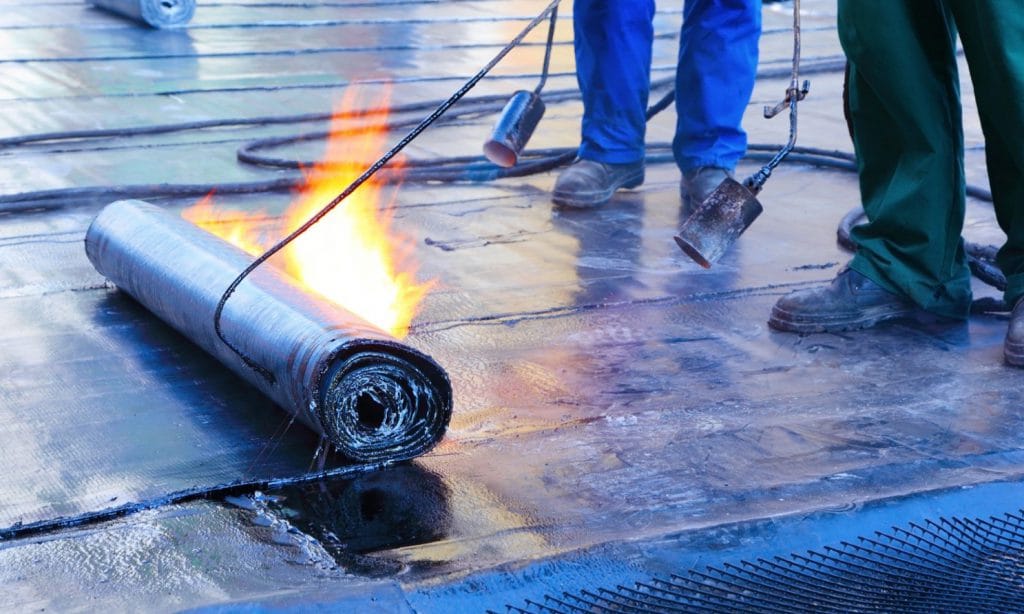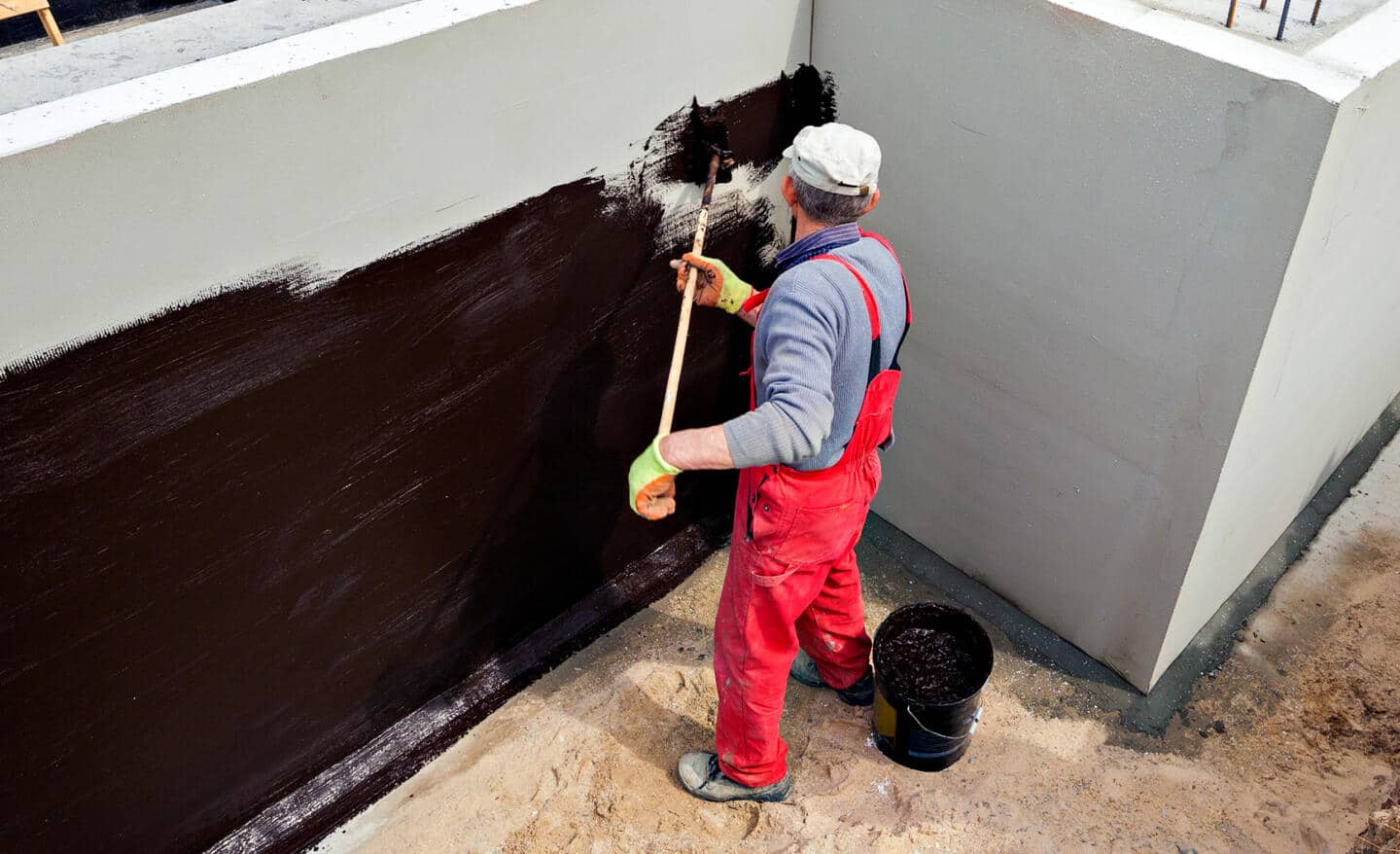Basement waterproofing Omaha: Is It Worth It?
Wiki Article
Kinds of Waterproofing: Discovering the Numerous Methods and Their Applications
Waterproofing is an essential aspect of building and maintenance. It secures frameworks from the harmful impacts of water damage. There are several approaches readily available, each with its unique applications and advantages. From membrane systems to cementitious options, comprehending these options is necessary for reliable execution. The selection of waterproofing approach can significantly affect longevity and long life. Discovering these numerous techniques reveals their distinct benefits and possible difficulties, motivating further factor to consider of perfect remedies.Membrane Layer Waterproofing Solutions
Membrane waterproofing systems work as an essential obstacle versus water breach in various structures. These systems usually contain slim sheets made from materials like rubber, polycarbonate, or bitumen, which are put on surface areas to avoid wetness penetration. They can be set up above or below quality and are particularly reliable in areas prone to high water direct exposure, such as basements, roofing systems, and foundations.The setup procedure entails cleaning the substratum, using adhesives or primers, and specifically fitting the membrane layer to ensure complete insurance coverage. Membrane systems can be either completely adhered, mechanically affixed, or laid loose, relying on the specific demands of the task. They provide toughness and adaptability, fitting architectural motions without jeopardizing their waterproofing capacities. These systems can be strengthened with additional layers for improved security. Eventually, membrane layer waterproofing systems are essential for guarding frameworks against water damages and preserving lasting integrity.Liquid-Applied Waterproofing Coatings
Liquid-applied waterproofing coatings supply a functional option for safeguarding surface areas from water seepage - Landscape drainage Omaha. These finishes contain liquid materials that, when applied, form a seamless, flexible membrane layer. Their adaptability permits application on different substratums, including concrete, metal, and timber. The coatings can be used in varied environments, from property to industrial setups, making them appropriate for roofings, structures, and below-grade structures.One significant advantage of liquid-applied finishings is their capability to adapt uneven forms and permeate splits, developing a durable obstacle against moisture. They typically exhibit excellent adhesion homes and resistance to UV radiation, making sure long life and toughness. Additionally, the application procedure is commonly uncomplicated, enabling quick installation and minimized labor costs. This method additionally minimizes the risk of water pooling, as the constant layer successfully routes water far from at risk areas. On the whole, liquid-applied waterproofing layers are an effective choice for complete water protectionCementitious Waterproofing Solutions

Cementitious waterproofing options use a robust alternative for structures calling for reputable dampness security. These systems primarily make use of a mix of concrete, sand, and chemical additives to create a water resistant barrier. They are frequently applied to surface areas such as concrete wall surfaces, structures, and floors, providing a resilient, resilient defense against water intrusion.One of the essential advantages of click resources cementitious waterproofing is its simplicity of application; it can be used utilizing a brush, roller, or spray, making it suitable for different task sizes. In addition, this method is compatible with many surfaces and can frequently be utilized combined with various other waterproofing techniques.Cementitious services are particularly efficient in settings where water direct exposure is a problem, such as basements or below-grade structures. Their superb attachment residential or commercial properties guarantee that they bond well with substrates, providing a solid and impenetrable layer against dampness penetration.
Bentonite Waterproofing
Bentonite waterproofing is a very effective method that uses sodium bentonite clay to create an all-natural obstacle against water. This strategy manipulates the special properties of bentonite, which expands upon contact with water, sealing any kind of prospective leakages and avoiding moisture seepage. It is frequently utilized in various applications, consisting of structure wall surfaces, tunnels, and retaining wall surfaces, where water resistance is essential.Bentonite can be used in a number of kinds, such as panels or blankets, providing adaptability in installation. Its capacity to self-seal makes it an attractive option for locations subject to shifting dirt or ever-changing water degrees. In addition, bentonite waterproofing is eco-friendly, as it is an all-natural product that does not present hazardous chemicals click for more into the environments.Drainage and Exterior Waterproofing Systems
Efficient waterproofing commonly includes a mix of strategies, consisting of water drainage and outside systems. Drainage systems, such as French drains pipes and sump pumps, are created to reroute water away from structures, lowering hydrostatic stress against foundations. These systems are crucial in stopping water buildup that can result in architectural damages and mold and mildew growth.External waterproofing, on the other hand, includes using protective obstacles to the structure's exterior. Strategies such as the installation of waterproof membranes, finishes, or sealers can help prevent water seepage. This method not only safeguards the structure yet also improves the overall longevity of the structure.Together, drain and external waterproofing systems develop a detailed solution to manage water properly. By executing these techniques, home proprietors can guard their investments versus the harmful results of wetness, guaranteeing long-lasting security and safety and security for their buildings.Frequently Asked Questions
Just how Do I Choose the Right Waterproofing Approach for My Task?
Picking the appropriate waterproofing method depends upon variables such as task type, environmental problems, budget, and desired long life. Reviewing these elements permits informed choices tailored to certain demands and requirements.
Can Waterproofing Be Applied in Cold Weather Issues?
Waterproofing can be applied in winter conditions, however it calls for certain products and methods. Cold temperature levels may affect healing times and adhesion, demanding cautious selection of items created for low-temperature application.
What Are the Common Indicators of Waterproofing Failing?
Typical indicators of waterproofing failing consist of visible water spots, peeling off paint, damp odors, mold growth, and cracks in wall surfaces or foundations. Sump pump discharge drainage Omaha. These signs suggest that dampness is permeating the obstacle, compromising its efficiencyThe Length Of Time Does Waterproofing Last Before Requiring Upkeep?
The durability of sites waterproofing varies, commonly lasting between 5 to one decade. Aspects such as worldly quality, environmental conditions, and maintenance practices influence its resilience, demanding periodic assessments to guarantee efficient security versus water intrusion.Exist Eco-Friendly Waterproofing Options Available?
The inquiry of environmentally friendly waterproofing alternatives discloses a growing rate of interest in lasting products (Yard drainage Omaha). Numerous all-natural materials, such as plant-based sealers and recycled products, offer effective services while lessening ecological effect, attracting ecologically aware consumersReport this wiki page